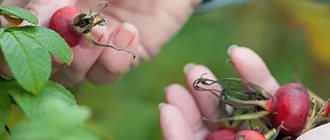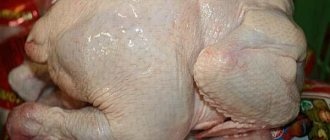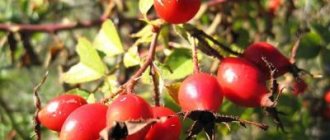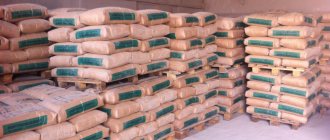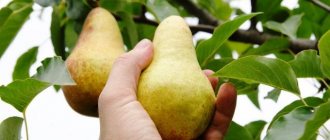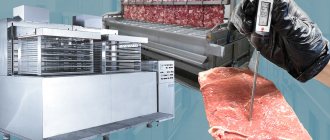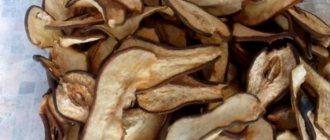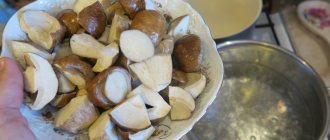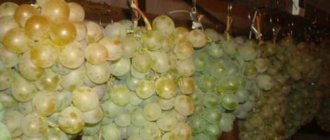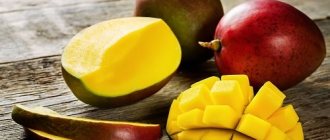After harvesting, pears can be stored in different ways. Fruit will do best in cool conditions. If the tender and juicy pulp of the fruit begins to deteriorate during storage, it is worth considering processing methods and making preparations for the winter. When planting pear trees on a plot, it is better to take care in advance of choosing a variety with good shelf life.
Rules for collecting and preparing pears for winter storage
The rules for harvesting pears directly apply to those who grew the crop with their own hands, which means they can control the harvesting process. It is necessary to pay attention to the following points:
- Pears should be picked from the tree when they are slightly unripe. Having reached full maturity on the branch, the fruits fall off and as a result receive mechanical damage. It will no longer be possible to preserve them for a long time.
- Pear is a fruit with delicate tender pulp, so it is better to collect it manually. Fabric gloves are first put on your hands. The pear is grasped so that it is inside the palm. With the other hand, carefully break the petiole with your fingers, without making sudden movements.
- Fruits growing at height are collected by climbing on a stepladder or using a fruit picker on a long handle.
- The collected pears are carefully placed in pre-prepared containers. These can be buckets or baskets lined with soft cloth.
The fruits of summer varieties are particularly juicy and soft; they are usually eaten within a short time after harvesting or used for preparations. Long-term preservation can only be ensured for autumn and winter pears, which must be removed before frost.
The pulp of such fruits has a denser consistency; they do not rot longer. In addition, in cool storage, pears reach the stage of full ripeness in a few months, which allows them to be stored for quite a long time.
The container itself and the fruits are prepared for storage. The bottom of the container is lined with paper or soft material. Each pear fruit is wrapped individually in paper. You don’t have to prepare the fruit in this way; in this case, they are sprinkled with filler. It can be soft wood shavings, sand, dry leaves, moss. There is no need to pre-wash the fruits.
Fruit selection
Fruits that will spend months in storage should not have any traces of mechanical damage, dents, stains, cracks, or signs of rotting. It is desirable that the waxy coating covering the pears be kept intact. Its function is to protect fruits from moisture loss and penetration of harmful bacteria. Pears must have the stem intact.
How to prepare a cellar?
You should start preparing for storing pears in advance.
2-3 weeks before harvesting, it is necessary to disinfect the cellar to protect the crop from rot and fungi.
You can use a sulfur smoke bomb , but you must strictly follow the operating instructions, or paint the floor, walls and ceiling of the room with slaked lime .
Don't forget about your personal safety; be sure to wear rubber gloves and a face mask.
After disinfection, the cellar is tightly closed; you should not enter it for several days. After this time, open the cellar for ventilation .
Where to store pears
The place for storing pears is chosen based on your capabilities. Fruits are placed in the refrigerator, on the balcony, in the cellar or basement. Part of the harvest can be buried in the ground, where the fruits will last much longer than at home.
Fridge
Pears are stored in the refrigerator in the standard way, placing them in the fruit and vegetable compartment. Unripe specimens can easily remain here for up to 2-3 months. The pears are first placed in bags weighing up to 2 kg.
We recommend: How to freeze sorrel for the winter and what to do if there is no space in the freezer?
The polyethylene is pierced in several places so that air can flow inside through the resulting holes. The refrigerator compartment should have a stable temperature in the range of +1-5° C. Periodically, the bags are taken out and inspected. If any of the fruits begins to deteriorate, it is removed to prevent contamination of the remaining ones.
Freezer
You need to freeze pears using the blast freezing function (which is available in most models of modern refrigerators). After 2 hours, you can return the refrigerator to normal mode. First, the fruits are washed, dried, and cut into pieces.
The container can be plastic containers or plastic bags with a zipper. It is better to place pieces of fruit there in portions. Smooth defrosting in winter is necessary for pears if you plan to eat them fresh. Before preparing the compote, the slices are not defrosted, but are immediately thrown into boiling water.
Basement or cellar
The conditions in both storage facilities are largely similar, except that the temperature in the cellar is lower in winter. The room must be cleaned and disinfected in advance by whitening the walls with lime, treating them with fungicides or using a smoke bomb.
A basement or cellar must have ventilation. Care must be taken to ensure that pests such as rodents and insects do not enter the storage facility. Fruits should be placed in boxes in 1-2 layers. The first layer is separated from the second with sheets of paper. The fruits themselves are wrapped in paper.
Balcony
The fruits will lie well only on a glazed balcony. It is important that during storage the temperature does not fall below 0° C. Frozen fruit will be spoiled after thawing. You need to store pears on the balcony in a special insulated box, unless, of course, the utility room is heated.
The bottom and walls of the storage facility are insulated from the inside with pieces of foam plastic or other heat-insulating material. The boxes in the box are stacked on top of each other. A thermometer is hung on the balcony to control the temperature. Its optimal indicator is +3-4° C.
Priming
You can organize the storage of pears right on your personal plot. To do this, dig a hole 50-70 cm deep. Selected healthy fruits are packaged in bags made of dense polyethylene, which are placed in a row at the bottom of the trench.
Before burying the bags, they are covered with thorny spruce branches to protect the crop from rodents and other animals that like pears. The top of the storage is covered with soil to create a small mound. A peg is stuck nearby or another mark is made.
What to do if the harvest begins to deteriorate
Creating optimal conditions allows you to save pears in most cases, but external circumstances often lead to the fact that the harvest begins to deteriorate.
If rotting has formed on 1-2 fruits and has not had time to spread further, then such spoiled fruits are immediately removed.
The room is ventilated, the remaining pears are transferred to fresh layers of paper, sprinkled with a new portion of sand, and the containers are changed.
If a large number of fruits are affected, a processing method is chosen and jams, jams, and compotes are prepared from them. Used for salads.
Optimal storage conditions for pears
The storage area where the crop is placed should not be too dry or damp. Normal humidity is 80-85%. As for the temperature, it must not fall below 0° C and not rise above +5° C.
In this case, the shelf life of the fruit will be maximum. The easiest way to maintain these conditions is in the refrigerator. In all other cases, temperature and humidity indicators must be regularly monitored and adjusted if necessary.
Shelf life of pears
How long pears will be stored depends on the chosen storage method and the conditions created. At optimal temperature and humidity, fruits can last up to 6 months, remaining fresh. If fruits, cut into pieces, are placed in the freezer, they will last up to 1 year, provided that they are not defrosted and re-frozen.
Alternative ways to store pears
Those who do not have the opportunity to store pears for months in a cool room or refrigerator can use alternative methods of preserving the crop. Dried fruits can be made from fruits. Dried pears can also be stored for a long time without any problems.
We recommend: Is it possible to store chocolate in the refrigerator if you want to preserve its taste?
Drying
Dried pear can easily be classified as a type of dessert. The fruits are peeled, cut into long slices, and soaked for 1 hour in a solution of citric acid (1 teaspoon per glass of water) to lighten the pulp. After this, the fruit slices are sprinkled with sugar and placed under pressure overnight. You can use a plate as a pressure.
In the morning, the resulting juice is drained, the pear slices are laid out on a baking sheet covered with foil, and placed in the oven for 4 hours at 100° C. After this, the product should acquire the desired condition during natural drying.
The fruit dish is put away on a cabinet or other suitable place and taken out after 7 days. The dried pear is ready. Sprinkle the slices with powdered sugar, put them in a glass jar and put them in the refrigerator. This preparation can be stored until the end of winter.
Drying
There are several ways to dry pears. To do this, use an electric dryer, oven, or electric grill. Drying in the oven is carried out at a temperature of 50-55° C with the door open. The process can last from 10 to 24 hours. The same temperature regime is set in the electric dryer.
Properly dried slices become thin and light, but do not break when bent. The fragility of the slices indicates that they are overdried. You can dry it naturally by laying it out in the shade on a flat surface. In this case, the fruit slices must be protected with gauze from flies and other insects.
Selection of containers
What should I store it in? The best solution when choosing containers for storing pears are wooden boxes with holes that allow air circulation. You should carefully check the boxes for any protruding nails that could damage the fruit.
In addition, it is better to place the boxes not close together, but to leave a little free space between them. In the absence of boxes, you can place pears on low wooden racks.
How to lay it correctly? The walls and bottom of the box are lined with several layers of thick paper, and each fruit is wrapped in thin and soft paper . The pears are laid diagonally, making sure that the stalks do not touch each other or neighboring fruits.
No more than 2-3 layers of are allowed in each box, with each layer separated from each other by several layers of paper.
The greenest pears should be placed in the bottom row, and the more ripe ones in the top row. sawdust or sand to store pears . The sand is pre-calcined and cooled.
A 1-2 centimeter layer of sawdust or sand is poured into a box lined with paper, the pears are laid out with the stalks up and covered with sand. Then the next layer is laid out, which is also covered with sand. Please note that the fruits you place must be dry .
Varieties suitable for long-term storage
For long-term storage, autumn and winter varieties of pears are selected. These varieties do not become soft for a very long time and ripen gradually.
Autumn varieties
Autumn pears are harvested at the very beginning of autumn. Among the popular varieties in this category:
- “Yakovlev’s Favorite”;
- "Santa Maria";
- “Dressy Efimova”;
- "Victoria";
- "Marble";
- "Gourmand."
The collected fruits are transferred to the storage facility first. You will also need to eat them first in winter. Most autumn varieties are highly productive. The shelf life of fruits in suitable conditions is 4 months.
Autumn-winter varieties
Among the autumn-winter varieties, we can distinguish the pear “Striiskaya”, “Pamyat Zhegalov”, “Bere Luke”. The shelf life of such fruits is 4-5 months.
Winter varieties
For long-term storage in winter, breeders developed special winter varieties. These pears are harvested before the first frost. These include:
- "Charles Cognier";
- "Belarusian late";
- "Pervomayskaya";
- "Thumbelina";
- "Domestic";
- "Saratovka".
Winter varieties can be stored for six months or more. As a rule, these varieties are characterized by frost resistance and immunity to diseases.
